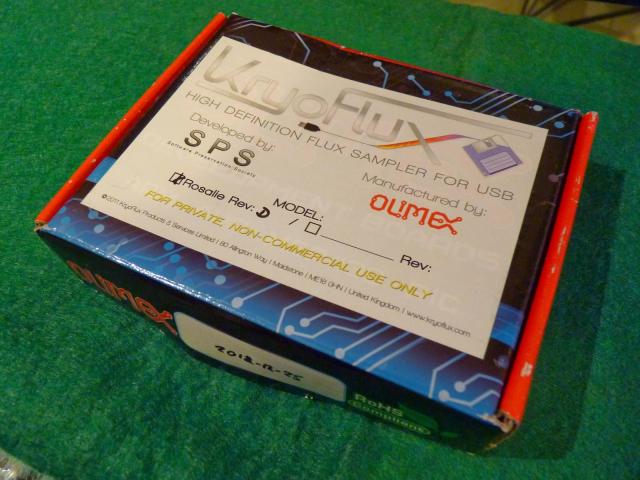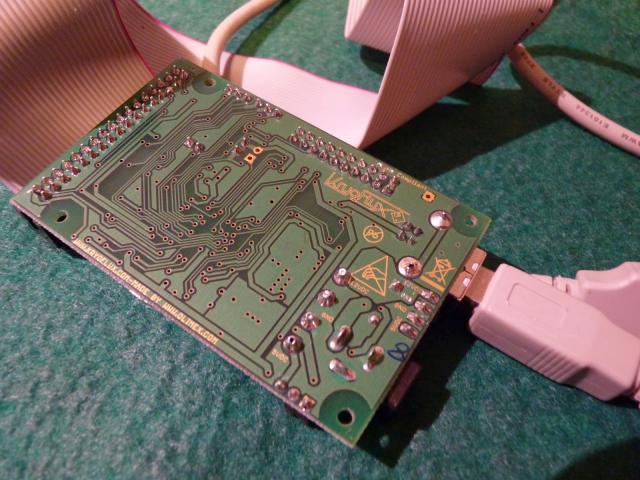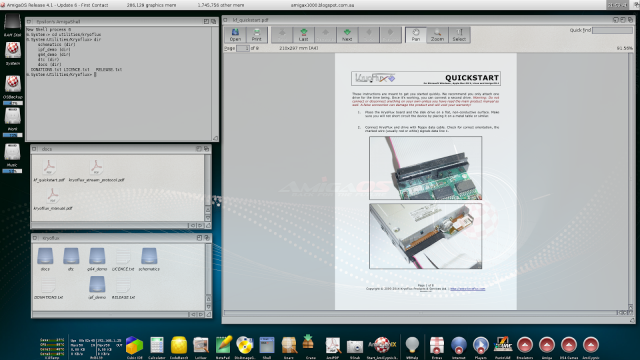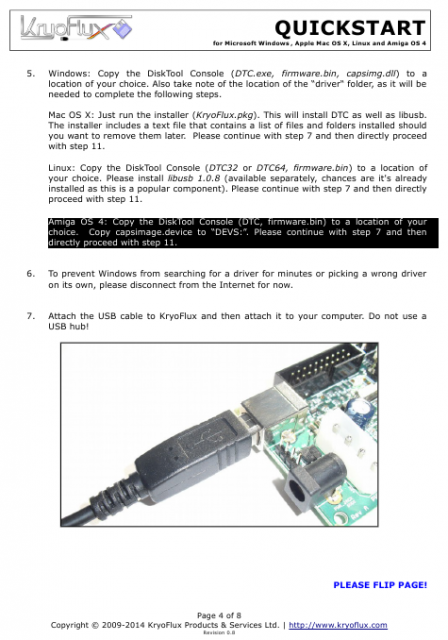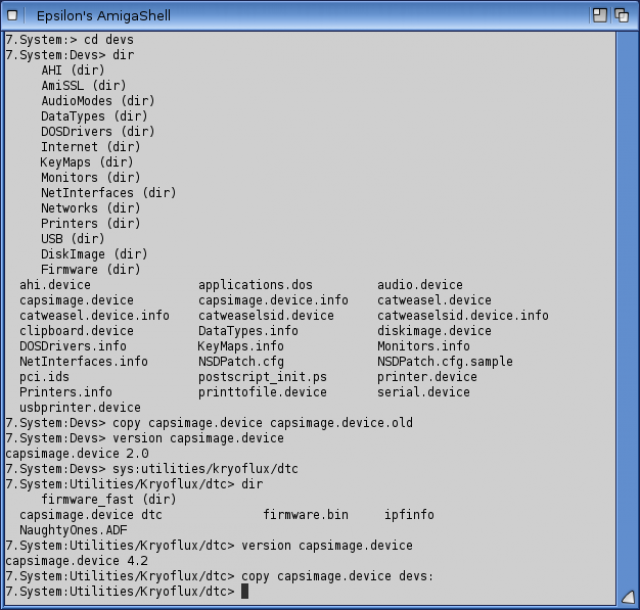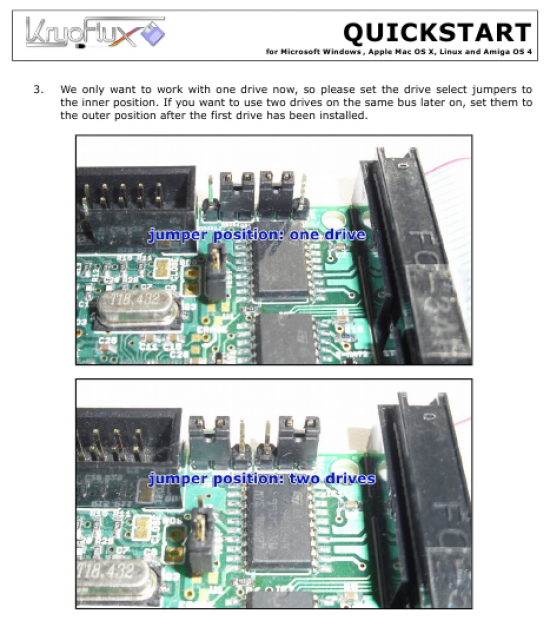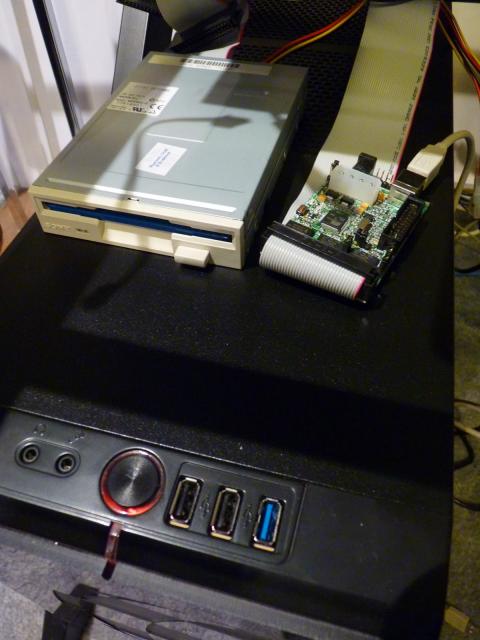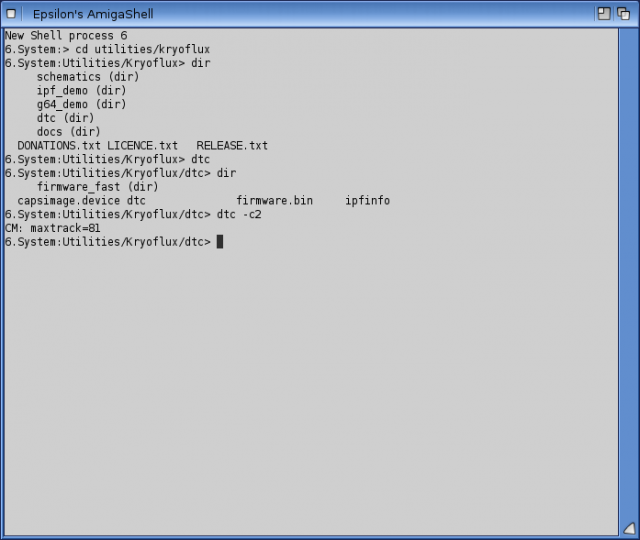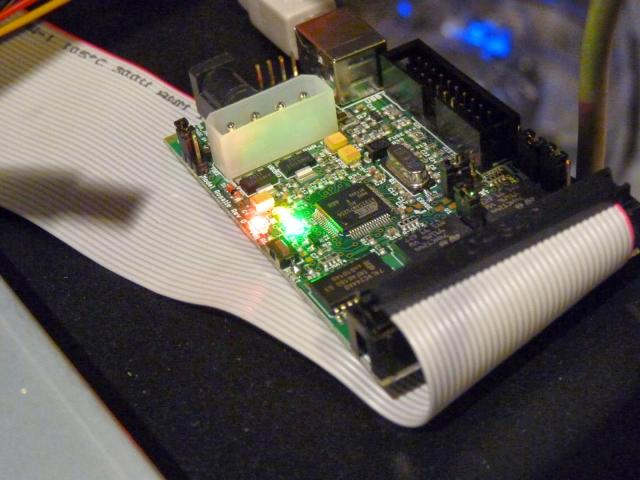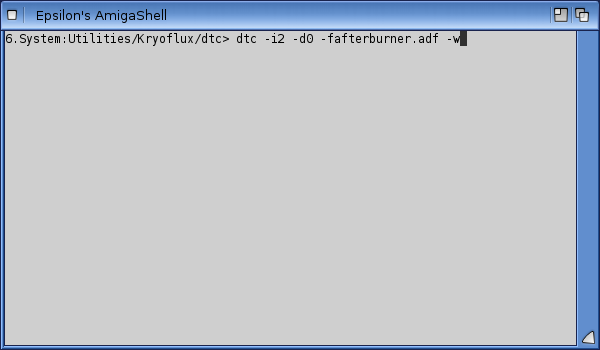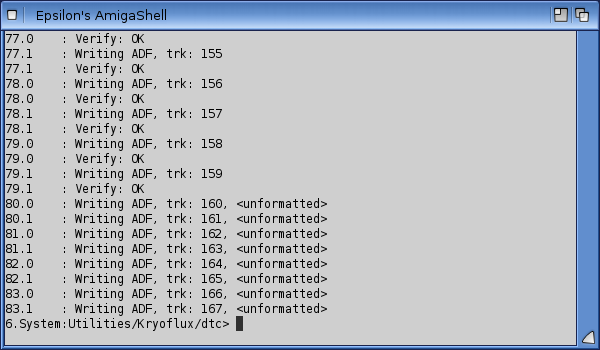Kryoflux on X1000 and A4000T
Today I wanted to take a look at the fantastic Kryoflux device, which now works under AmigaOS4 on the X1000.
So what is Kryoflux? Basically it is a USB device that allows you to read/write floppy disk images to a real floppy disk, using a floppy disk drive connected to it. (you can read more about it here).
What makes it special for Amiga users, and more useful than the Catweasel I already use on the X1000, is the ability to write out IPF Classic Amiga disks, which are protected Classic Amiga disk images of original games. These cannot be copied using normal Amiga disk copy methods, but the Kryoflux can read the raw image out directly from the original Amiga floppy disk, which can then be converted to IPF and rewritten to blank floppy disks to provide a backup.
For disks that are now up to 30 years old, this is a blessing as original protected Amiga games disks can be backed up using the Kryoflux.
In addition to IPF, the Kryoflux can write out ADF disks too, and also images of C64 disks (D64), PC disks (IMG) and more to real floppy disks...
I purchased the Kryoflux back in late 2012, and used it on my Mac and PC. But now, I can use it on the X1000 too!
An AmigaOS4 version of the software needed to support the Kryoflux and read/write floppy disks images was recently released on Kryoflux's website. (scroll down a way down the page to see the downloads)
There is no GUI front end available for AmigaOS4 version as yet, so it is used completely from the shell.
I hope a GUI frontend is also written in due course, as it is a lot more user friendly.
But first, let's take a look at the Kryoflux board itself (click to expand):
The back view of the Kryoflux board is below:
The Kryoflux AmigaOS4 downloaded archive includes the programs needed to operate the Kryoflux, the caps image device driver, and a Quickstart guide and full Kryoflux manual (click to expand):
I created a Kryoflux folder under the SYS:Utilities folder, and then extracted the Kryoflux archive into it.
The Quickstart guide has AmigaOS4 specific instructions, the full Kryoflux manual does not, but contains all the command line flags and descriptions to use the program - this means both are needed here:
Make sure that you copy the capsimage.device to the DEVS: directory to start with. I checked first and my existing version in DEVS: was v2.0, while this updated driver is version 4.2 (as below)!
The Quickstart guide also explains how to set the Kryoflux jumpers depending on how many floppy drives you have connected to it. In my case, I just have the one drive:
After connecting a standard PC HD Floppy drive to the Kryoflux and the various connectors, making sure not to connect the power for the floppy drive prior to connecting the Kryoflux to the X1000, it then looked like below:
While doing this I was thinking I would like to source a Classic Amiga Commodore 1011 floppy drive, strip out the Amiga disk drive and disk drive external cable, and then replace it with the PC floppy drive and Kryoflux inside (with usb and power coming out the old drive cable hole) so it is self contained and easier to move around - not sure if it will fit or whether I need a 1010 drive casing - anyway, perhaps one day I'll get it!
As per the instructions it is important to connect the Kryoflux via USB to the X1000 before powering on the floppy drive. Once this is done, I can then configure the drive in AmigaOS4.
I put in a normal Classic Amiga floppy disk as I need to initialise the Kryoflux device and get it to detect from the floppy disk inserted how large the disk images need to be.
From the Shell I just need to be in the SYS:Utilities/Kryoflux/dtc folder. Then I can run dtc -c2 which will then do the detection. In this case we get the result that there are 81 tracks:
As part of this the Kryoflux device will then be seen by the USB controller. The lights will come to life on the Kryoflux device and the floppy drive too:
So next we need to try out some disk writing. To start with, I tried an ADF image, and then an IDF image. I copied the files I wanted to the sys:utilities/kryoflux/dtc folder and renamed them to remove spaces in the filenames.
I guess you don't have to do this but I couldn't work out how to get it to see files in folders or if the filename had spaces. Let me know if you work it out.
The command I used to write out the images is:
dtc -i2 -d0 -f<filename>.adf -w
-i defines the type of file, -d the floppy drive number, -f the filename, -w to write the image to disk.
I tried a old classic Amiga game from 1988 first....
As the tracks are written out, the progress is shown in the Shell window - all good so far:
And below the image is all done, no problems found, and quite quick too:
So now to try out the disk - which nicely brings me onto the subject of my Classic Amiga I am going to use - my Amiga 4000T. I spent a lot of time over the years getting this Amiga 4000T exactly how I wanted it. I finished the setup back in early 2012, just before getting the X1000! :-)
The A4000T runs AmigaOS3.9, has USB (Deneb) and PCI ports, PCI Network adapter, Dual TFT displays, Dual IDE ports on a Zorro card, Individual Computers scan doubler and PCI video card, PCI sound card for hardware MP3 playback (with Amiga standard audio mixed in), multiple CD/DVD drives and hard disks, Cyberstorm PPC/060, etc.
In short, I like this Classic Amiga very much - I could never imagine selling it. Here is some shots of it before we try out the game we just wrote out using the Kryoflux - this is the first time I have turned on the A4000T in 2014:
Inside the front cover:
Here is a shot showing the PCI video card display on the left screen and the Individual computers scan doubler used for the native Amiga display on the right:
I do have a Picasso IV Zorro card, so in theory I could just use one screen if I just used that, but the PCI video card provides higher resolutions and greater colour depth, hence the dual display.
I run AFA_AOS on the A4000T, allowing me to use PNG icons, AmigaOS4 theme and Anti-aliased fonts. I used the AmigaSys4 install as a base, then modified it - a lot :-)
Little bit off topic of course but while I was here on the A4000T I checked Aminet using AWeb and found a port of Flappy Bird (famous on iPhone iOS) available for Classic Amiga today. I quickly downloaded it and had a go since I was here:
It was just as frustrating as the iPhone version....I guess that is good, right? I loved the title tune, a great retro Amiga throwback!
Anyway, enough about that - easy to get carried away as an Amiga user of over 25 years!
Let's now test the disk image we created on the X1000 using Kryoflux - on reboot we need to go to the early startup menu to disable CPU caches and use the Enhanced Chipset rather than AGA:
I put in the disk I created in the A4000T and it booted up and played no problem:
So having confirmed ADF's work fine, I then tried writing out a backup of a protected ipf original Amiga disk using Kryoflux on the X1000, which completed successfully too (it uses the same command structure as for the ADF):
And here is the disk booted and running on the A4000T, working perfectly:
And one more image disk writing tested using the Kryoflux, and also working fine:
In summary, Kryoflux is a fantastic way to preserve and restore Classic Amiga disks, and I am very glad to be able to use it now on the X1000!
